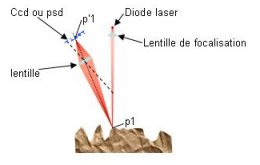Mechanical sensors
composed of a pivoting stylet fitted at one end with a diamond tip which rests on the surface to be analysed, and a system which measures the displacement of the arm. The measurement of the displacement most often uses an inductive principle : a ferrite core integral with the stylet is displaced in a two range winding coil, the conditioner of the sensor performing the excitation of the first coil by a 20 KHz sinisoidal signal and the synchronous detection of the signal induced on the second coil.
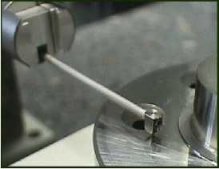
Laser optic roughness sensors
using the servo-control principle of compact disk heads. there are made up of an optical assembly which ensures the fixed focusing of a laser beam onto the surface and which projects the reflected beam onto four photodiodes, and by vertical diplacement system permitting the slaving of the focusing point.
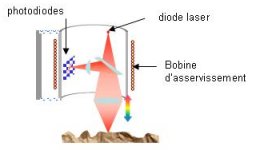
White light optic roughness sensors
White light confocal optic sensors use the chromatic aberration of a lens. A white source is focused on the surface by an optical assembly which presents a strong chromatic aberration. The altitude of the surface is determined by a spectral analysis of the light reflected by this surface.
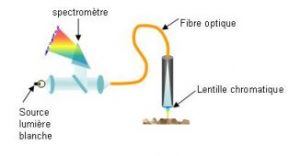
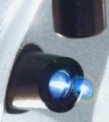
Triangulation optic sensors
Their principle is founded on the measurement of the look angle of a laser beam projected onto the surface.
